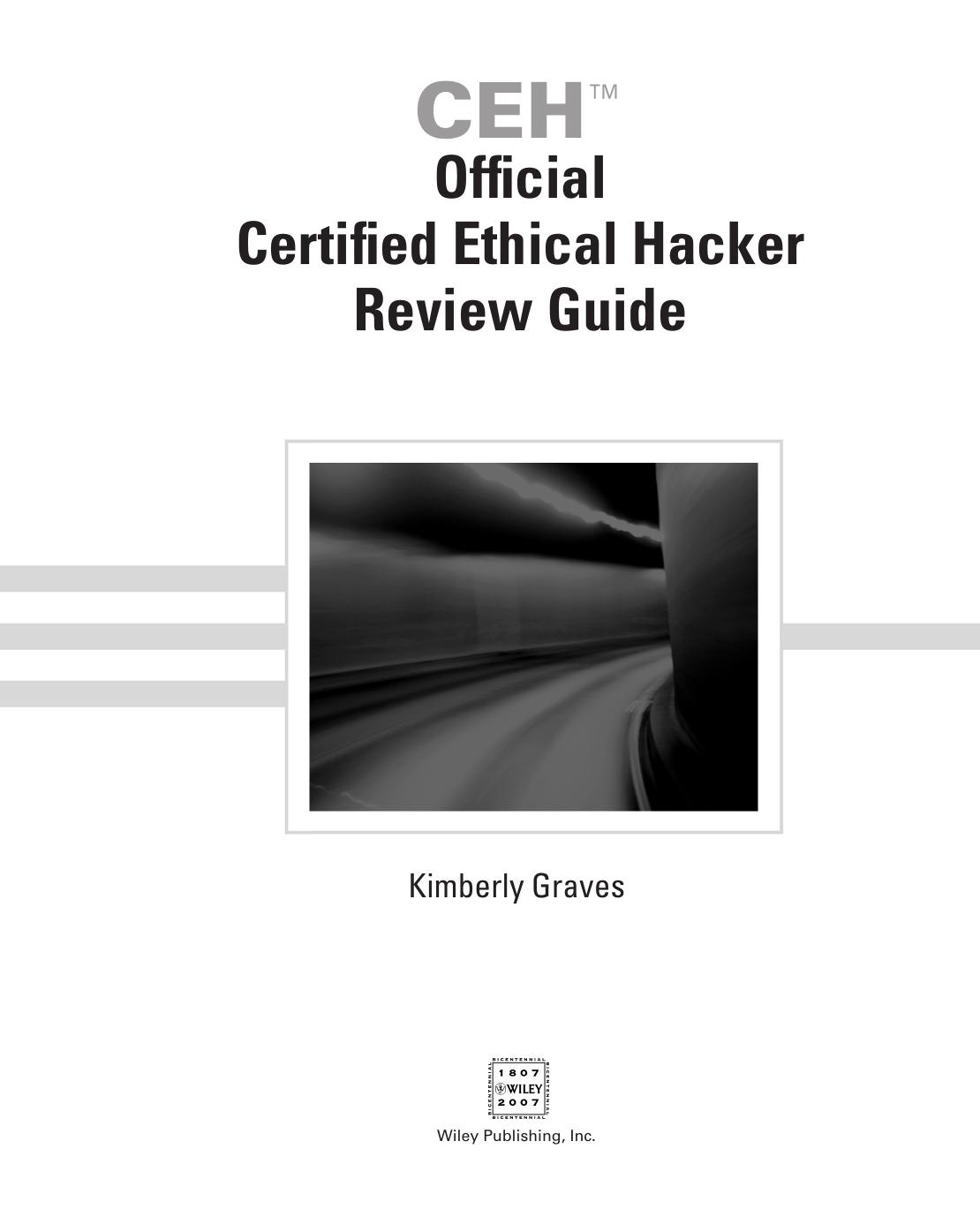CEH Official Certified Ethical Hacker Review Guide 1st Edition by Kimberly Graves ISBN 0782144373 9780782144376
$70.00 Original price was: $70.00.$35.00Current price is: $35.00.
Instant download CEH Official Certified Ethical Hacker Review Guide 0782144373 after payment
CEH Official Certified Ethical Hacker Review Guide 1st Edition by Kimberly Graves – Ebook PDF Instant Download/Delivery: 0782144373, 978-0782144376
Full dowload CEH Official Certified Ethical Hacker Review Guide 1st Edition after payment

Product details:
ISBN 10: 0782144373
ISBN 13: 978-0782144376
Author: Kimberly Graves
CEH Official Certified Ethical Hacker Review Guide 1st Table of contents:
Chapter 1: Ethics and Legality
-
Ethical Hacking Terminology: Understand key terms such as ethical hacker, penetration testing, and hacking tools.
-
Job Role of an Ethical Hacker: Responsibilities include testing, securing, and improving systems by identifying vulnerabilities.
-
Phases in Ethical Hacking: Five stages: Reconnaissance, Scanning, Gaining Access, Maintaining Access, and Clearing Tracks.
-
Hacktivism: Hacking for political or social activism.
-
Types of Hackers: White hat, black hat, grey hat, and others based on intentions.
-
Skills Required: Knowledge of networks, programming, security protocols, and ethical hacking tools.
-
Legal Implications: Ethical hackers must understand laws like 18 U.S.C. § 1030 (U.S. Federal Law) to avoid illegal actions.
Chapter 2: Footprinting and Social Engineering
-
Footprinting: Gathering information about a target system (e.g., using Whois, ARIN lookups, DNS enumeration).
-
Social Engineering: Manipulating people into revealing confidential information (e.g., phishing, dumpster diving).
-
Countermeasures: Training employees, using secure practices.
Chapter 3: Scanning and Enumeration
-
Scanning: Includes port, network, and vulnerability scanning (e.g., using tools like Nmap).
-
Enumeration: Gathering more detailed information after scanning (e.g., SNMP, null sessions).
-
Techniques: Includes SYN, Stealth, and FIN scanning, along with proxy servers and anonymizers.
Chapter 4: System Hacking
-
Password Cracking: Techniques and tools used to break into accounts.
-
Privilege Escalation: Methods for gaining higher access levels in systems.
-
Keyloggers/Spyware: Tools to monitor user activity secretly.
-
Rootkits/Steganography: Hiding malicious activity and data.
Chapter 5: Trojans, Backdoors, Viruses, and Worms
-
Trojans: Malicious software that looks benign but performs harmful actions (e.g., Netcat Trojan).
-
Viruses and Worms: How they spread and methods for detection and evasion.
-
Countermeasures: Techniques to prevent and detect Trojans, viruses, and worms.
Chapter 6: Sniffers
-
Sniffing: Intercepting network traffic (active and passive sniffing).
-
Countermeasures: Encryption, VPNs, and other secure methods to protect data.
Chapter 7: Denial of Service and Session Hijacking
-
DoS and DDoS: Types of attacks that overwhelm a system’s resources (e.g., SYN flooding, Smurf attack).
-
Session Hijacking: Taking over a valid user session; includes prevention strategies.
Chapter 8: Hacking Web Servers, Web Application Vulnerabilities
-
Web Server Attacks: Exploiting vulnerabilities in web servers (e.g., IIS exploits).
-
Web Application Hacking: Attacking weaknesses in web applications (e.g., SQL injection, cross-site scripting).
-
Password Cracking: Techniques for bypassing authentication.
Chapter 9: SQL Injection and Buffer Overflows
-
SQL Injection: Exploiting vulnerabilities in database queries to gain unauthorized access.
-
Buffer Overflows: Techniques to manipulate memory handling in software.
Chapter 10: Wireless Hacking
-
WEP/WPA: Cracking wireless encryption standards and understanding rogue access points.
-
Securing Wireless Networks: Methods to protect wireless communications from attack.
Chapter 11: Physical Security
-
Physical Security Breaches: Understanding the importance of physical access controls and security.
-
Factors Affecting Physical Security: Access controls, surveillance, and environmental factors.
Chapter 12: Linux Hacking
-
Linux Kernel Compilation: Techniques for modifying and securing Linux systems.
-
Hardening Methods: Steps to improve security on Linux systems.
Chapter 13: Evading IDS, Honeypots, and Firewalls
-
IDS Evasion: Methods to avoid detection by Intrusion Detection Systems.
-
Firewall and Honeypot Techniques: Bypassing firewalls and exploiting honeypots for attack.
Chapter 14: Cryptography
-
Encryption Techniques: Methods like MD5, SHA, Blowfish for securing data.
-
Key Management: Public and private key cryptography and their uses.
Chapter 15: Penetration Testing Methodologies
-
Pen-Testing Methodology: Steps followed during a penetration test (e.g., Reconnaissance, Gaining Access).
-
Pen-Test Legal Framework: Understanding legal constraints when performing pen tests.
-
Automated Tools: Tools that assist in penetration testing (e.g., Metasploit, Nessus).
People also search for CEH Official Certified Ethical Hacker Review Guide 1st:
what is certified ethical hacker (ceh)
certified ethical hacker review
does certified ethical hacker expire
ceh v10 certified ethical hacker study guide pdf free download


